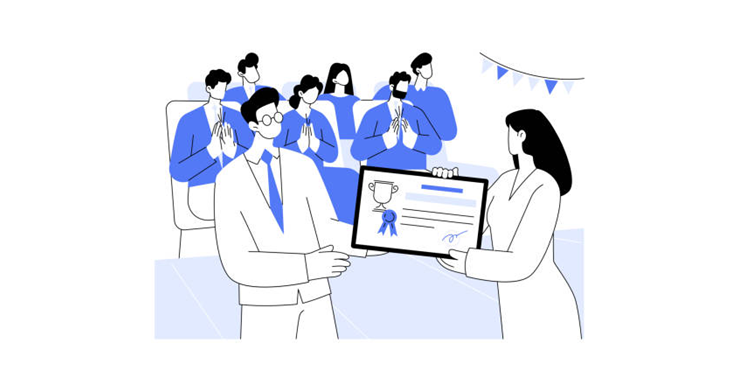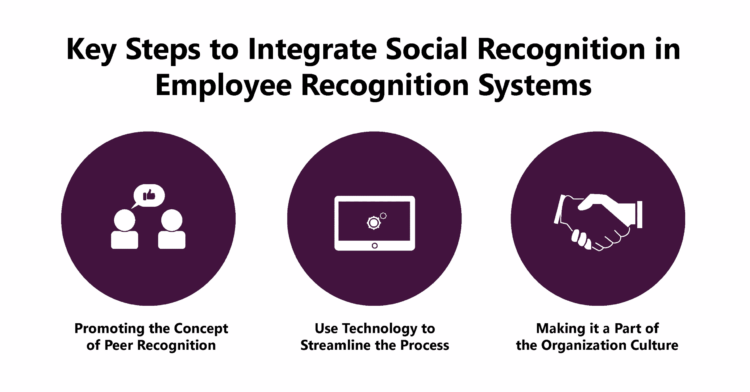1. Enhances Employee Pride and Value: Social recognition boosts employees’ sense of pride and self-worth, making them feel valued by their peers and the organization.
2. Fosters Peer Integration and Motivation: Peer-to-peer recognition ensures employees feel accepted and appreciated, inspiring others to perform better.
3. Promotes a Culture of Appreciation: Integrating social recognition into the organization’s culture helps create a self-sustaining environment of appreciation and acknowledgment.
4. Leverage Technology for Recognition: Using technology platforms facilitates streamlined social recognition, allowing easy peer acknowledgments and creating visibility through digital tools like e-cards and walls of fame.
In an era when digital socializing has become an essential part of almost every individual’s life, simply presenting rewards and certificates to employees might not be enough. Therefore, in today’s world, understanding the significance of social recognition and integrating it into employee recognition systems is of the utmost importance for organizations.
Social recognition is not just about using public social media channels, but about highlighting the achievements and efforts of their employees across the organization. Recognition by peers is the key to social recognition. Recognition by management is important for employees, but social recognition is the icing on the cake.
Social recognition is critical for employee recognition. Hence, it should be integral to employee rewards and recognition programs.
The most important benefits are as follows:

Social recognition gives employees a deep sense of pride in their work and enhances their self-worth significantly.

Being recognized socially assures employees that their peers value them enough to highlight their contributions and efforts on a public platform proudly.

Peer-to-peer recognition ensures that the employees feel accepted, acknowledged, and appreciated for their hard work and contributions by their coworkers.

Social recognition motivates other workforce members to have higher performance levels and get similar recognition.
Organizations need to integrate social recognition into their employee recognition programs effectively. Therefore, they should take a few key steps towards this, as described below:


Employee recognition should start with coworkers themselves; organizations should promote peer recognition among the workforce. Hence, management should empower employees to appreciate the efforts and achievements of their coworkers directly without waiting for the approval of their supervisors. Employees should feel free to approach and praise their peers for a well-done job.

Another effective way to streamline the recognition process is to use the right technology platform. Investing in recognition platforms can make it easier for employees to send ‘Thank You’ e-cards to co-workers. At the same time, it enables HR to keep track of employees who their peers appreciate. Effective employee recognition software with a built-in digital wall of fame can assist in social recognition.

Social recognition needs to become an integral part of the organizational culture. There are many forums for social recognition, such as team meetings, offline or virtual, emails, discussion groups, sticky notes, etc. Social recognition can help build a self-sustaining culture of appreciation without constant intervention from HR.
Social recognition is all about publicizing the efforts and achievements of employees in a manner that inspires other members of the workforce to perform better and get similar recognition.

Lead author: Sagar Chaudhuri, the Co-Founder and CEO of HiFives. He is an HR Tech Evangelist with over 25 years of corporate and entrepreneurship experience. In the past, Sagar has worked in leadership roles with companies such as Genpact, Infosys, and ICICI Bank. He has an engineering degree from IIT Kharagpur and an MBA from IIM Lucknow. Connect on LinkedIn
To stay updated on the latest HiFives blogs, follow us on Twitter (@MyHiFives)